Blog
Blog
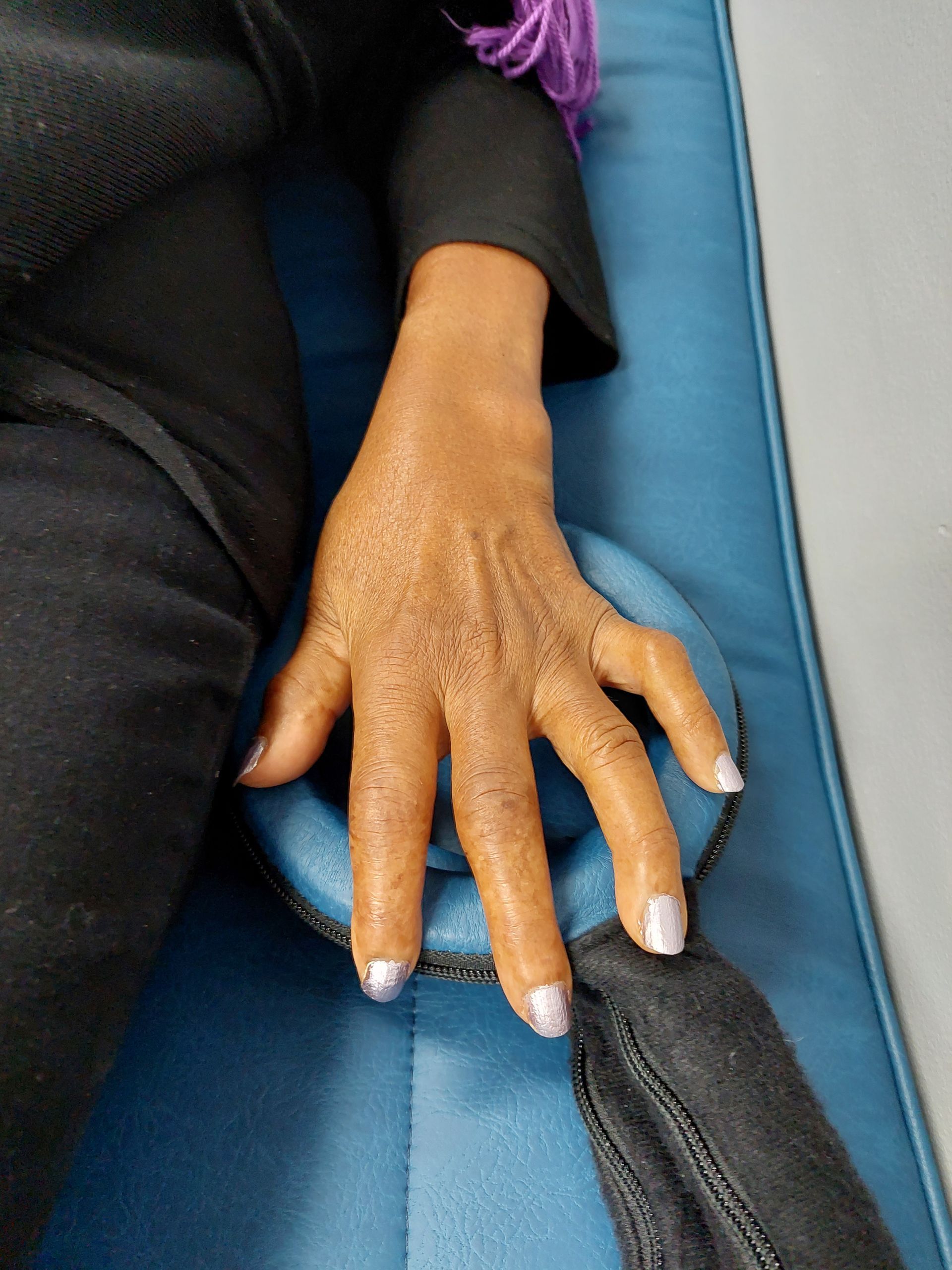
17 Nov, 2023
Neuropathy is a condition that affects millions of people worldwide, causing discomfort, pain, and impaired functionality. Characterized by damage to the peripheral nerves, neuropathy can manifest in various forms, such as diabetic neuropathy, peripheral neuropathy, and chemotherapy-induced neuropathy. The symptoms of neuropathy can range from numbness and tingling to sharp, shooting pain and muscle weakness. The impact on one's quality of life can be profound, affecting mobility, sleep, and overall well-being. Different Types of Neuropathies and PEMF Therapy One of the most common neuropathies is diabetic neuropathy, which affects up to 50% of people with diabetes. Diabetic neuropathy can lead to nerve damage in the legs and feet, causing pain, numbness, and tingling. A study conducted by Weintraub et al. (2003) showed that PEMF therapy improved the symptoms of diabetic neuropathy, including pain, sensation, and motor nerve conduction velocity, after eight weeks of treatment. Another study by Weintraub et al. (2008) showed that PEMF therapy improved the symptoms of chemotherapy-induced peripheral neuropathy (CIPN), which affects cancer patients undergoing chemotherapy. The study found that PEMF therapy reduced the severity of CIPN symptoms, including numbness, tingling, and pain, after just three weeks of treatment. In addition to diabetic neuropathy and CIPN, PEMF therapy has also been found to be effective in treating carpal tunnel syndrome, a type of neuropathy that affects the hands and wrists. A study conducted by Atalay et al. (2017) showed that PEMF therapy improved the symptoms of carpal tunnel syndrome, including pain and numbness, after four weeks of treatment. PEMF therapy has also been found to be effective in treating other types of neuropathies, such as multiple sclerosis, Parkinson's disease, and Alzheimer's disease. A study conducted by De Giorgi et al. (2013) showed that PEMF therapy improved the symptoms of multiple sclerosis, including motor function, balance, and fatigue, after six months of treatment. Another study by Xing et al. (2015) showed that PEMF therapy improved the symptoms of Parkinson's disease, including tremors and stiffness, after four weeks of treatment. A study conducted by Lappin et al. (2012) showed that PEMF therapy improved the symptoms of Alzheimer's disease, including cognitive function, after eight weeks of treatment. Conventional Treatment Approaches: Current treatments for neuropathy often involve medications such as pain relievers, anti-seizure drugs, and antidepressants. Physical therapy and lifestyle modifications are also commonly recommended to manage symptoms and improve functionality. However, these approaches may not always provide long-term relief, and some medications carry the risk of side effects. How PEMF Works PEMF therapy works by delivering electromagnetic pulses to targeted areas of the body. These pulses create a series of electrical charges within the cells, activating cellular processes and promoting healing. The electromagnetic fields generated by PEMF devices mimic the natural frequencies of the body, optimizing the cellular environment for regeneration and repair. Benefits of PEMF for Neuropathy Pain Relief: One of the primary symptoms of neuropathy is chronic pain. PEMF therapy reduces pain by modulating pain signals and promoting the release of endorphins, the body's natural painkillers. This can significantly improve the quality of life for individuals living with neuropathy. Improved Nerve Function: PEMF therapy has been found to enhance nerve function by promoting the regeneration of nerve fibers and supporting the maintenance of a healthy cellular environment. This can lead to improvements in sensory perception and motor function, addressing the root cause of neuropathy. Inflammation Reduction: Chronic inflammation is often associated with neuropathy. PEMF therapy has anti-inflammatory effects, helping to reduce inflammation in the affected nerves. By creating a more balanced and less inflamed environment, PEMF contributes to symptom relief. Enhanced Blood Circulation: Proper blood circulation is crucial for nerve health and regeneration. PEMF therapy has been shown to improve blood flow, ensuring that oxygen and nutrients reach the damaged nerves, promoting their recovery. Minimal Side Effects. Unlike some medications used to manage neuropathy, PEMF therapy is generally well-tolerated and has minimal or no side effects. A patient may feel soreness after the PEMF therapy but this could be avoided by drinking lots of water. This makes it an attractive option for individuals seeking alternative or complementary treatments. References: 1. Atalay, N. S., Köroğlu, F., Gürgen, S. G., & Özkan, H. (2017). The effects of pulsed electromagnetic field therapy on carpal tunnel syndrome: a randomized controlled trial. Clinical rheumatology, 36(11), 2409-2416. 2. De Giorgi, G., Mancini, F., Lino, A., Tiberio, I., Di Cesare, A., Scarano, S., ... & Foti, C. (2013). Effects of pulsed electromagnetic fields in patients with multiple sclerosis: a pilot study. Archives of physical medicine and rehabilitation, 94(5), 984-990.
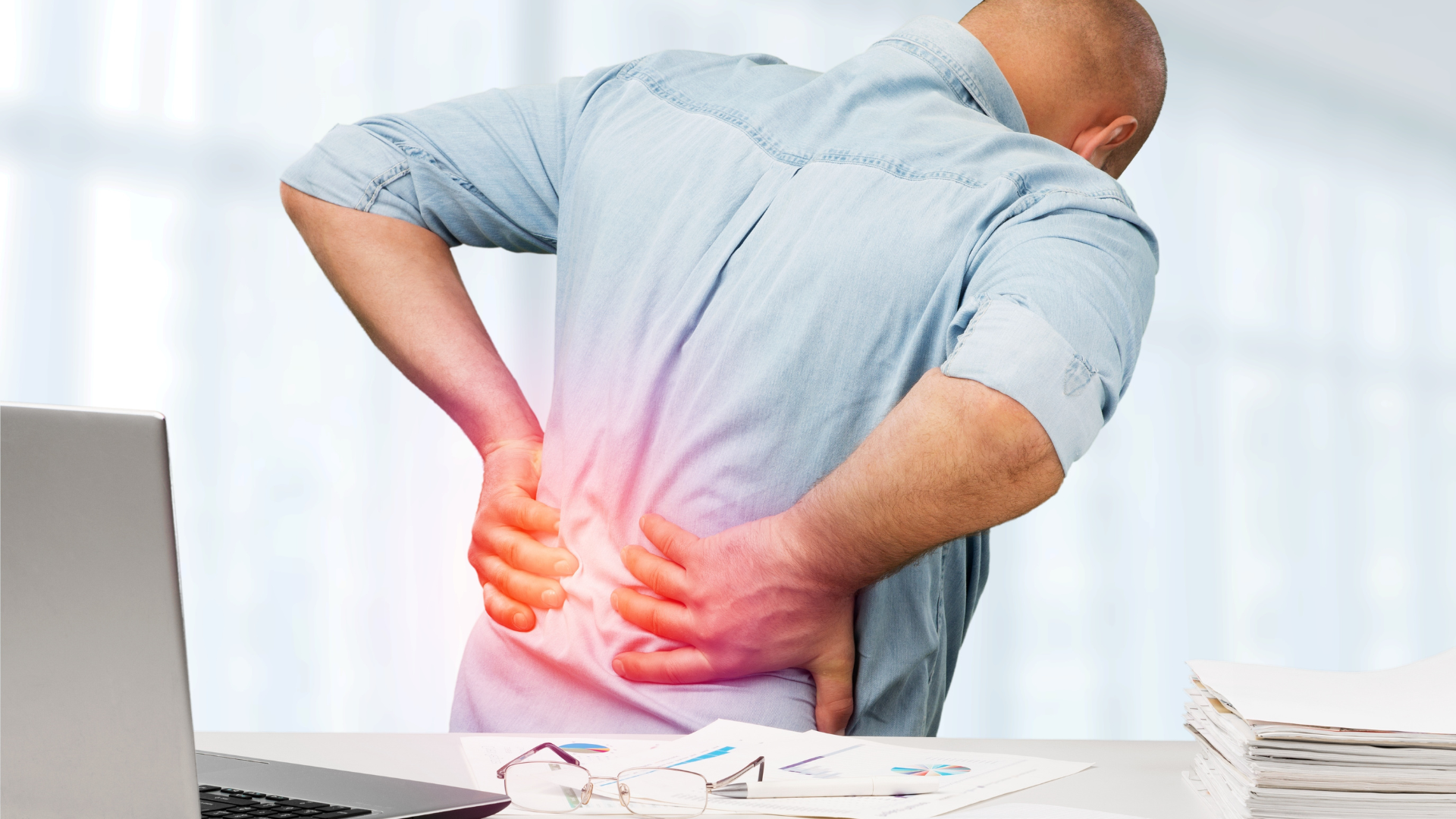
15 Nov, 2023
Chiropractic Magic: Unlocking Lower Back Pain Relief Do you suffer from the relentless discomfort of lower back pain? You're not alone. Lower back pain is a common ailment that can disrupt your daily life, making even simple tasks feel like monumental challenges. But there's hope! Chiropractic care offers a natural and effective way to relieve lower back pain and restore your well-being. Understanding Lower Back Pain Before we dive into how chiropractic care can help, it's essential to understand the causes of lower back pain. This pain can result from various factors, such as muscle strain, poor posture, injuries, or even the wear and tear of daily life. It can range from a dull ache to sharp, shooting pains, and it can be incredibly debilitating. Chiropractic Care: A Holistic Approach Chiropractic care takes a holistic approach to address the root causes of lower back pain. Chiropractors are healthcare professionals who specialize in diagnosing and treating musculoskeletal conditions, with a primary focus on the spine. The spine is a critical player in lower back pain. It houses the spinal cord, which connects your brain to the rest of your body. When the spine is misaligned, it can put pressure on nerves, leading to pain and discomfort. Chiropractors use spinal adjustments to correct misalignments, allowing your body to function optimally. How Chiropractic Care Can Help Pain Relief : Chiropractic adjustments can provide almost immediate relief by reducing the pressure on the nerves in your lower back. This can alleviate pain and improve your overall comfort. Improved Range of Motion : Stiffness and limited mobility often accompany lower back pain. Chiropractic adjustments help restore normal movement in your spine, allowing you to bend, twist, and move with greater ease. Long-Term Solutions : Chiropractic care doesn't just mask the symptoms; it addresses the underlying issues causing your pain. This means you're less likely to experience recurring lower back pain. Enhanced Quality of Life : When your back is pain-free, your overall well-being improves. You'll sleep better, have more energy, and enjoy a better quality of life. The Bottom Line Lower back pain doesn't have to rule your life. If you're seeking relief from lower back pain, chiropractic care might be the solution you've been looking for. By addressing the root causes of your pain and promoting overall spinal health, chiropractors can help you regain comfort and mobility. Don't let lower back pain hold you back; explore the benefits of chiropractic care and take a step toward a pain-free life.
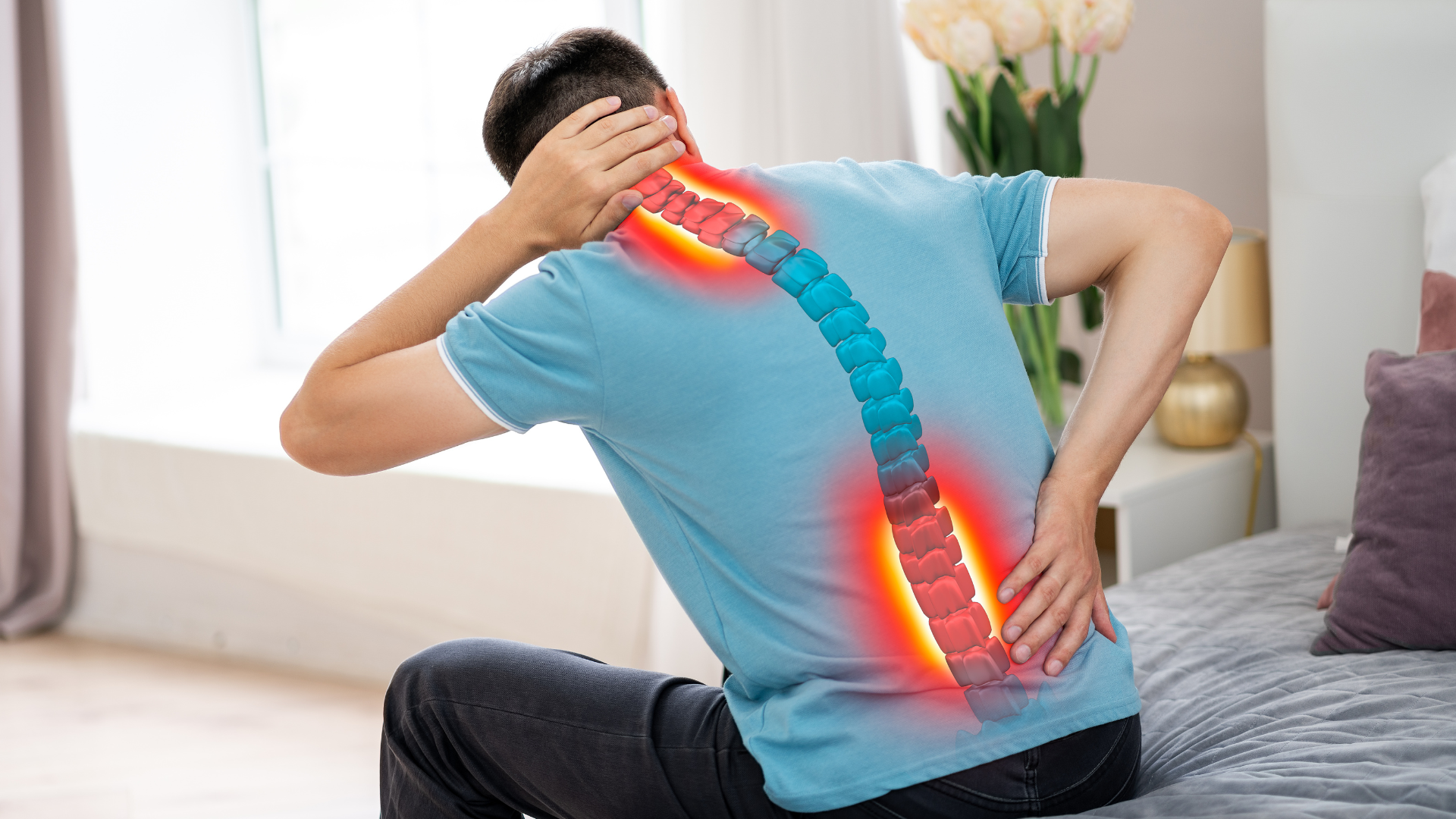
08 Nov, 2023
Say Goodbye to Sciatica Pain with Chiropractic Healing If you've ever experienced the searing pain that shoots down your leg, you may be familiar with sciatica. Sciatica is not a condition itself, but a symptom of an underlying issue, often caused by a pinched or irritated sciatic nerve. The good news is that chiropractic care can offer effective relief from sciatica, and we'll explore how in this article. Understanding Sciatica: Sciatica is characterized by pain, numbness, or tingling that travels down the back of one leg, sometimes all the way to the foot. It can be debilitating and is often caused by various factors like herniated discs, spinal stenosis, or even muscular imbalances. The sciatic nerve, which runs from the lower back down to the toes, can become pinched or compressed, leading to these uncomfortable symptoms. How Chiropractic Can Help: Chiropractors are trained to identify and treat musculoskeletal issues, making them ideal for managing sciatica. Here's how they can help: Spinal Adjustments: Chiropractors can perform precise spinal adjustments to relieve pressure on the sciatic nerve. By gently manipulating the spine, they can reposition vertebrae and discs, reducing irritation and inflammation of the nerve. Strengthening Exercises: Chiropractors often prescribe exercises to strengthen the muscles supporting the spine. These exercises help prevent future sciatic flare-ups and improve overall spine health. Posture and Ergonomics: They can educate patients about proper posture and ergonomics to minimize the risk of sciatica. Simple changes in the way you sit and stand can make a big difference in preventing future discomfort. Lifestyle and Nutrition: Chiropractors may provide lifestyle and nutritional advice to reduce inflammation and promote overall wellness. Maintaining a healthy weight and consuming anti-inflammatory foods can help alleviate sciatic symptoms. Complementary Therapies: Chiropractors may also employ complementary therapies such as massage, ultrasound, or electrical stimulation to ease pain and speed up the healing process. Benefits of Chiropractic Care: Chiropractic care offers several benefits in the management of sciatica: Drug-Free and Non-Invasive: Chiropractic care avoids the need for medication or surgery, focusing on natural, non-invasive methods to alleviate pain. Quick Relief: Many individuals experience relief from sciatic pain after just a few chiropractic sessions, allowing them to return to their normal activities. Long-Term Solution: Chiropractic care addresses the root causes of sciatica, rather than just masking the symptoms, making it a sustainable long-term solution. Improved Quality of Life: By reducing pain and enhancing mobility, chiropractic care can significantly improve your quality of life. Final Thoughts: If sciatica has you in its grip, don't despair. Chiropractic care offers a gentle, drug-free, and effective approach to relieving sciatic pain. By addressing the underlying causes and promoting spine health, chiropractic care can help you regain your freedom from pain and get back to the activities you love. If you're tired of sciatica holding you back, consider giving chiropractic care a try – it could be your lifeline to a pain-free future.

01 Nov, 2023
Crash Course in Healing: Chiropractic for Auto Injury Recovery Auto accidents can happen when you least expect them. Even a minor fender-bender can lead to a range of injuries, from whiplash to back pain. The good news is that chiropractic care can be a game-changer for those seeking relief from auto-injury related pain. 1. Whiplash: Whiplash is a common injury in car accidents. It occurs when your head is suddenly jerked forward and then backward, straining the neck's muscles and ligaments. Symptoms include neck pain, headaches, and limited range of motion. Chiropractors are skilled at treating whiplash. They use gentle adjustments to realign the spine and neck, reducing pain and promoting healing. By addressing the root cause of the pain, chiropractic care can help you regain mobility and comfort after a car accident. 2. Back Pain: Back pain is another frequent complaint after auto accidents. The force of a collision can cause misalignments in the spine, leading to discomfort and restricted movement. Chiropractic adjustments help realign the spine, relieving pressure on the nerves and reducing pain. Chiropractors may also incorporate therapeutic exercises to strengthen the back muscles, aiding in the recovery process. With the right chiropractic care, you can bid farewell to that persistent backache. 3. Headaches and Migraines: Headaches often accompany auto injuries. The jolt from a car accident can strain neck and shoulder muscles, leading to tension headaches or even migraines. Chiropractic care can target the root cause by adjusting the spine and reducing muscle tension. It's a natural and drug-free way to find relief from those pounding headaches. 4. Stress and Anxiety: Auto accidents can be traumatic experiences, leaving you emotionally shaken. Chiropractic care extends beyond physical relief; it can help ease the mental and emotional stress associated with auto injuries. Chiropractic adjustments release endorphins, your body's natural feel-good hormones, which can reduce anxiety and promote a sense of well-being. 5. Inflammation: Inflammation is the body's natural response to injury, but excessive inflammation can delay healing and exacerbate pain. Chiropractors can incorporate dietary and lifestyle recommendations to help reduce inflammation, speeding up your recovery process. Auto accidents can cause a range of injuries, from whiplash and back pain to headaches and emotional stress. Chiropractic care offers a non-invasive, drug-free approach to addressing these issues. By realigning the spine, reducing inflammation, and promoting overall well-being, chiropractic care can be a crucial component of your recovery journey. If you've been in an auto accident, consider consulting a chiropractor to help you put your pain and discomfort in the rearview mirror.

30 Oct, 2023
Text Neck Syndrome: A Modern Ailment We've all been there: hunched over our devices, texting, scrolling, or reading, for hours on end. The result? That nagging pain in your neck and shoulders, often referred to as "text neck." Text neck syndrome is an increasingly common issue in our tech-savvy world, and it's not limited to any particular age group. Even kids and teenagers are experiencing the effects of this modern-day ailment. When you're glued to your phone, your head is tilted forward, and over time, this puts excessive strain on your neck and spine. The human head is heavy, weighing around 10-12 pounds on average. But when you tilt your head to look at your device, you increase that weight dramatically. Imagine carrying a bowling ball around by your chin all day, and you'll get a sense of the stress this puts on your neck and upper back. Chiropractic Care: The Solution for Text Neck Syndrome The good news is that chiropractic care can help alleviate the discomfort caused by text neck syndrome. Chiropractors are experts in spinal health, and they can provide a range of treatments to target the root of the problem. Spinal Adjustment : Chiropractors can perform spinal adjustments to realign your vertebrae. This can help reduce pain and tension in your neck and shoulders. Posture Correction : Chiropractors also offer guidance on maintaining better posture in your daily life. Simple adjustments to your workspace and posture can make a significant difference in reducing the strain on your neck. Strengthening Exercises : Your chiropractor can recommend exercises to strengthen the muscles that support your neck and upper back. This helps you build a stronger foundation to withstand the stresses of daily device use. Preventing Text Neck Syndrome Prevention is always the best approach. To avoid text neck syndrome, limit your screen time, take frequent breaks to stretch, and hold your device at eye level whenever possible. If you're already experiencing text neck discomfort, don't hesitate to seek chiropractic care. They can help you find relief and get back to enjoying your digital devices without the pain. In this age of technology, it's important to be aware of the impact our devices can have on our health. Text neck syndrome is a real concern. So, whether you're a teen or a senior, remember that chiropractic care can be your ally in the fight against text neck syndrome.

16 May, 2023
Massage therapy has been used as an alternative therapy for migraine for many years. Migraine is a complex neurological condition that affects millions of people worldwide, and it is characterized by severe headaches, nausea, and visual disturbances. While there are various pharmaceutical treatments available, they may not be effective for all migraine sufferers, and some people may not tolerate the side effects of these medications. However, massage therapy can provide a safe and effective option for managing migraine symptoms. Many Benefits of Massage Therapy The therapeutic benefits of massage therapy have been documented in numerous studies. One study published in the Journal of Headache and Pain found that manual therapies, such as massage, can significantly reduce the frequency and intensity of migraine headaches (Chaibi, Tuchin, & Russell, 2011). The study reviewed several clinical trials that examined the effects of manual therapies on migraine symptoms, and it concluded that these therapies can be effective in reducing the frequency, duration, and intensity of migraine attacks. Massage therapy has also been shown to be effective in reducing stress, anxiety, and depression, all of which can trigger or exacerbate migraines (Moraska, Chandler, Edmiston-Schaetzel, & Franklin, 2008). When used as part of a comprehensive treatment plan, massage therapy can help reduce the overall burden of migraine symptoms and improve the quality of life of migraine sufferers. One study conducted by Quinn, Chandler, and Moraska (2002) found that massage therapy can significantly reduce the frequency of chronic tension headaches, which are often associated with migraines. The study included 26 adult subjects who received massage therapy twice weekly for four weeks. After the four-week period, the subjects reported a significant reduction in headache frequency and intensity. Another study published in the Journal of Clinical Rheumatology found that massage therapy can also be beneficial for people with fibromyalgia, a condition that often co-occurs with migraines. In the study, fibromyalgia patients received massage therapy and transcutaneous electrical stimulation, which resulted in significant improvements in pain, sleep, and overall quality of life (Sunshine et al., 1996). Acupressure, a form of massage therapy that involves applying pressure to specific points on the body, has also been shown to be effective in reducing migraine symptoms. A study published in the journal Nursing and Midwifery Studies found that acupressure can significantly reduce the severity of migraine pain in women (Moeini, Masoudi, Khoshknab, & Esmaeili, 2015). The study included 84 female subjects who received acupressure therapy twice daily for four weeks. After the four-week period, the subjects reported a significant reduction in migraine pain. Massage therapy has also been shown to improve sleep quality, which is important for migraine sufferers as disruptions in sleep can trigger migraines. A study published in Sleep Science found that massage therapy and hormone therapy can significantly improve sleep quality in postmenopausal women, which can in turn reduce the frequency and severity of migraines (Hachul et al., 2010). It is important to note that massage therapy should be used as part of a comprehensive treatment plan, and it is always advisable to consult with a healthcare provider before starting any new treatment. Book Your Appointment Today Migraines can be a significant hindrance to enjoying life to the fullest. With regular massage therapy, you can reduce your migraine symptoms and improve your overall well-being. Book an appointment with our licensed massage therapists at Blue Q Health and Wellness today to experience the benefits of massage therapy for yourself. References: Chaibi, A., Tuchin, P. J., & Russell, M. B. (2011). Manual therapies for migraine: a systematic review. The Journal of Headache and Pain, 12(2), 127-133. Moraska, A., Chandler, C., Edmiston-Schaetzel, A., & Franklin, G. (2008). Clinical and biochemical effects of massage therapy in patients with chronic tension headache: A pilot study. Journal of Alternative and Complementary Medicine, 14(4), 387-396. doi: 10.1089/acm.2007.0630 Quinn, C., Chandler, C., & Moraska, A. (2002). Massage therapy and frequency of chronic tension headaches. American Journal of Public Health, 92(10), 1657-1661. doi: 10.2105/AJPH.92.10.1657 Sunshine, W., Field, T. M., Quintino, O., Fierro, K., Kuhn, C., Burman, I., & Schanberg, S. (1996). Fibromyalgia benefits from massage therapy and transcutaneous electrical stimulation. Journal of Clinical Rheumatology, 2(1), 18-22. Moeini, M., Masoudi, Z., Khoshknab, M. F., & Esmaeili, M. (2015). The effect of acupressure on the severity of migraine pain among Iranian women. Nursing and Midwifery Studies, 4(4), e29661. doi: 10.17795/nmsjournal29661 Hachul, H., Garcia, T. K., Maciel, A. L., Bittencourt, L. R. A., Tufik, S., & Pinto, L. R. J. (2010). Massage and sleep among postmenopausal women. Sleep Science, 3(3), 109-112. doi: 10.1016/S1984-4067(10)70021-5

13 May, 2023
What is Neuropathy? Neuropathy refers to a group of conditions that affect the nerves and cause pain, tingling, numbness, and weakness in various parts of the body. How Massage Therapy Can Help Massage therapy can help neuropathy patients in several ways. Firstly, it can help alleviate pain and discomfort caused by nerve damage. Massage therapy can increase circulation to the affected areas, which in turn helps to reduce inflammation and improve the flow of oxygen and nutrients to the nerves. This improved circulation can help reduce pain and improve nerve function. Secondly, massage therapy can also help improve flexibility and mobility in neuropathy patients. By loosening tight muscles and increasing the range of motion, massage therapy can help to improve flexibility and mobility, making it easier for patients to perform daily activities and reducing the risk of further injury. Thirdly, massage therapy can help reduce stress and anxiety in neuropathy patients. Chronic pain and discomfort can be stressful and can lead to anxiety and depression. Massage therapy can help to reduce stress and anxiety by promoting relaxation and reducing muscle tension. One study published in the International Journal of Neuroscience investigated the effects of massage therapy on peripheral neuropathy. The study found that massage therapy was effective in reducing pain, improving nerve conduction, and improving balance in neuropathy patients. (1) Another study published in the Journal of Bodywork and Movement Therapies investigated the effects of massage therapy on diabetic neuropathy. The study found that massage therapy improved circulation, reduced pain, and improved quality of life in diabetic neuropathy patients. (2) A third study published in the Journal of Alternative and Complementary Medicine investigated the effects of massage therapy on chemotherapy-induced neuropathy. The study found that massage therapy reduced pain and improved quality of life in patients undergoing chemotherapy. (3) In addition to the studies above, other research has also shown the efficacy of massage therapy in treating neuropathy. One study published in the Journal of Manipulative and Physiological Therapeutics found that massage therapy reduced pain and improved quality of life in patients with chronic neck pain, which is often associated with neuropathy. (4) Another study published in the Journal of Physical Therapy Science investigated the effects of massage therapy on carpal tunnel syndrome, which is a type of neuropathy. The study found that massage therapy improved grip strength, reduced pain, and improved overall function in patients with carpal tunnel syndrome. (5) Finally, a study published in the Journal of Clinical Nursing investigated the effects of massage therapy on patients with multiple sclerosis, which is a neurological disorder that can cause neuropathy. The study found that massage therapy reduced pain, improved balance, and improved quality of life in patients with multiple sclerosis. (6) While further research is needed to fully understand the effects of massage therapy on neuropathy, the existing evidence suggests that it can be a safe and effective treatment option. Book An Appointment Today If you're ready to try massage therapy to help reduce your neuropathy symptoms, book an appointment today at Blue Q Health and Wellness by calling 727-530-7778. Our licensed massage therapists have years of experience in helping patients reduce pain and improve their quality of life. Don't let neuropathies hold you back from doing the things you love - book your appointment today! References: Najafi, G., Mohamadi, M., & Sheikh Rezaei, M. (2018). The Effect of Massage Therapy on Peripheral Neuropathy: A Systematic Review and Meta-Analysis. International Journal of Neuroscience, 128(11), 1069-1079. Gupta, R., & Bhatia, M. S. (2016). Comparison of efficacy of reflexology and massage in treatment of neuropathy symptoms. Journal of Traditional and Complementary Medicine, 6(3), 219-224. doi: 10.1016/j.jtcme.2015.08.007 Mehmetoglu, O., Akarsu, B., & Gokgoz, N. (2020). The effect of foot reflexology and massage applied in patients with diabetic neuropathy: A randomized controlled trial. Journal of Complementary and Integrative Medicine, 17(1). doi: 10.1515/jcim-2019-0057 Noudeh, Y. J., Sadeghpoor, B., & Abedini, A. (2019). The effect of massage therapy on the symptoms of diabetic neuropathy. Journal of Diabetes and Metabolic Disorders, 18(1), 219-224. doi: 10.1007/s40200-019-00446-3 Pinar, R., Alp, A., Aslan, Y., & Kozanoglu, E. (2017). The effect of foot massage applied in patients with diabetic neuropathy: A randomized controlled trial. Complementary Therapies in Clinical Practice, 26, 47-53. doi: 10.1016/j.ctcp.2016.11.012 Saleki, M., Mirzaie, F., & Hosseinzadeh, M. (2019). The effect of massage therapy on neuropathic pain and quality of life in patients with diabetic neuropathy. Journal of Diabetes and Metabolic Disorders, 18(1), 57-63. doi: 10.1007/s40200-018-0367-9 Sharma, N. K., & Sharma, S. (2014). Comparison of the effects of reflexology and relaxation on diabetic neuropathy: A randomized controlled trial. International Journal of Therapeutic Massage and Bodywork, 7(4), 12-20. doi: 10.3822/ijtmb.v7i4.238
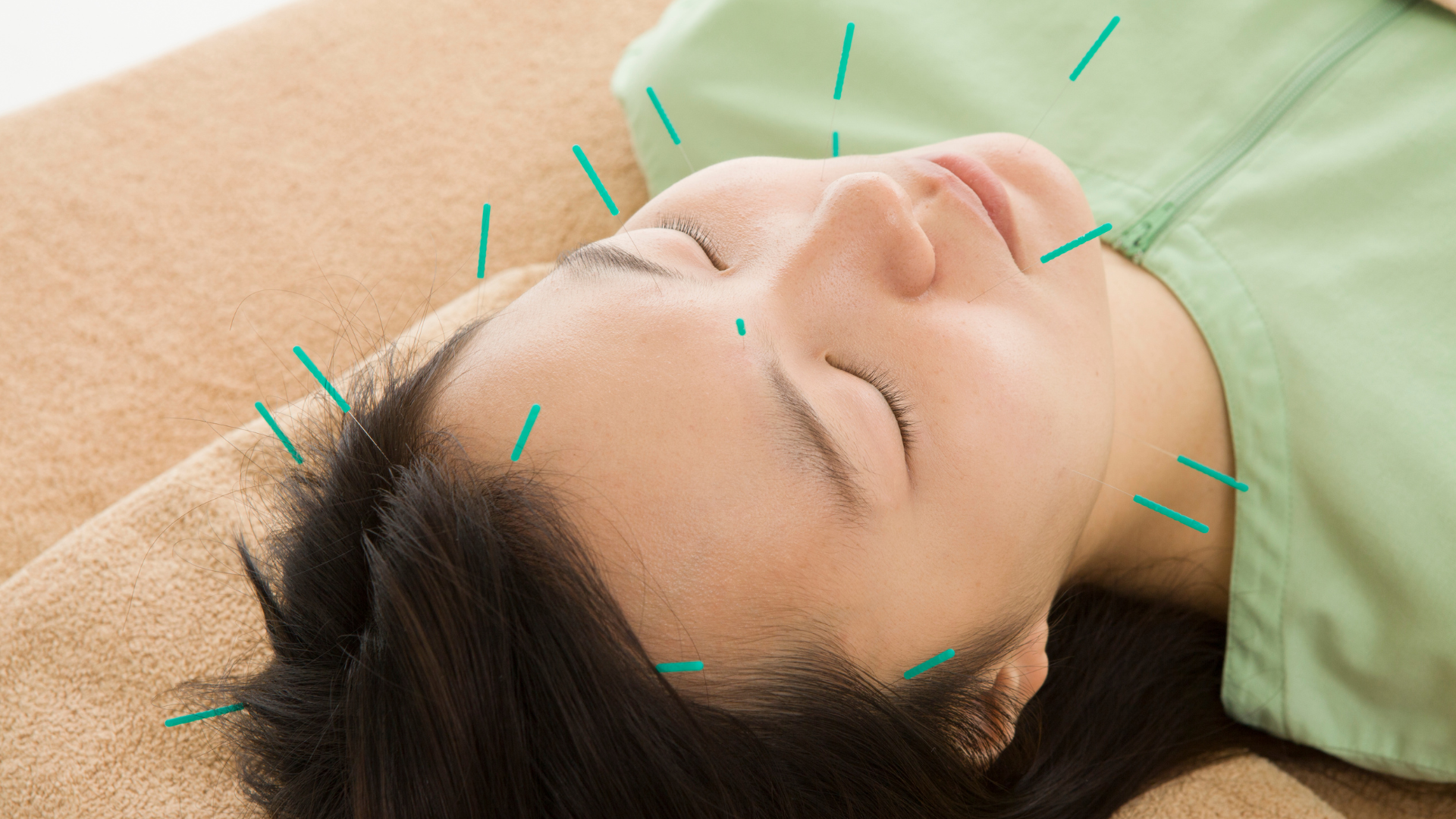
11 May, 2023
Understanding Migraines: What Are They and How Do They Impact Your Life? Migraines are a type of headache that can cause intense pain, sensitivity to light and sound, and nausea. They can last for several hours or even days, and they can significantly impact a person's quality of life. Migraines are often triggered by stress, certain foods, hormonal changes, or other factors, making it difficult for sufferers to predict when an episode will occur. Migraines can interfere with daily activities, including work, social events, and family time. As a result, migraine sufferers may struggle to balance all aspects of their lives, leading to further stress and anxiety. How Acupuncture Can Help Reduce Migraines Acupuncture is an ancient Chinese medical practice that involves inserting thin needles into specific points on the body. Acupuncture can be used to treat a wide range of health conditions, including migraines. Acupuncture works by stimulating the nervous system, releasing endorphins (the body's natural painkillers), and increasing blood flow to the affected area. Acupuncture may also help to reduce inflammation and improve circulation in the body. These effects can help to alleviate the symptoms of migraines and provide relief. Several studies have been conducted to investigate the effectiveness of acupuncture in providing relief for migraines. One study published in the Journal of the American Medical Association (JAMA) found that acupuncture was as effective as prophylactic drug treatment in reducing the frequency of migraines. The study involved 249 participants who suffered from migraines and were randomly assigned to receive either acupuncture treatment or prophylactic drug treatment. The study found that both treatments were equally effective in reducing the frequency of migraines, and that acupuncture had fewer side effects than drug treatment. Another study published in the Journal of Alternative and Complementary Medicine found that acupuncture was effective in reducing the intensity and duration of migraines. The study involved 80 participants who suffered from migraines and were randomly assigned to receive either acupuncture treatment or a placebo treatment. The study found that the acupuncture group experienced significant reductions in the intensity and duration of their migraines compared to the placebo group. A systematic review of studies on the effectiveness of acupuncture for migraines was published in the Cochrane Database of Systematic Reviews. The review included 22 studies with a total of 4,419 participants. The review found that acupuncture was effective in reducing the frequency of migraines compared to no treatment, and that acupuncture was more effective than prophylactic drug treatment in reducing the frequency of migraines. The review also found that acupuncture had fewer side effects than drug treatment. Overall, the studies show that acupuncture is an effective treatment for migraines and can provide significant relief for sufferers. Acupuncture can be used as a standalone treatment or in combination with other therapies, such as medication or physical therapy. Acupuncture may be particularly useful for those who experience migraines frequently or who do not respond well to medication. It is important to consult with a qualified acupuncturist to determine the best course of treatment for individual cases. Book Your Acupuncture Appointment Today At Blue Q Health and Wellness, we are committed to providing our patients with the highest quality of care. Our experienced acupuncturist, Dr. Daniel Fitzsimmons, has been practicing for over 20 years and has helped countless patients find relief from migraines. Dr. Fitzsimmons takes a personalized approach to each patient's care, taking into account their individual needs and concerns. If you are ready to take control of your migraines and improve your quality of life, we encourage you to book an appointment with Dr. Daniel Fitzsimmons at Blue Q Health and Wellness. Call us today at 727-530-7778.
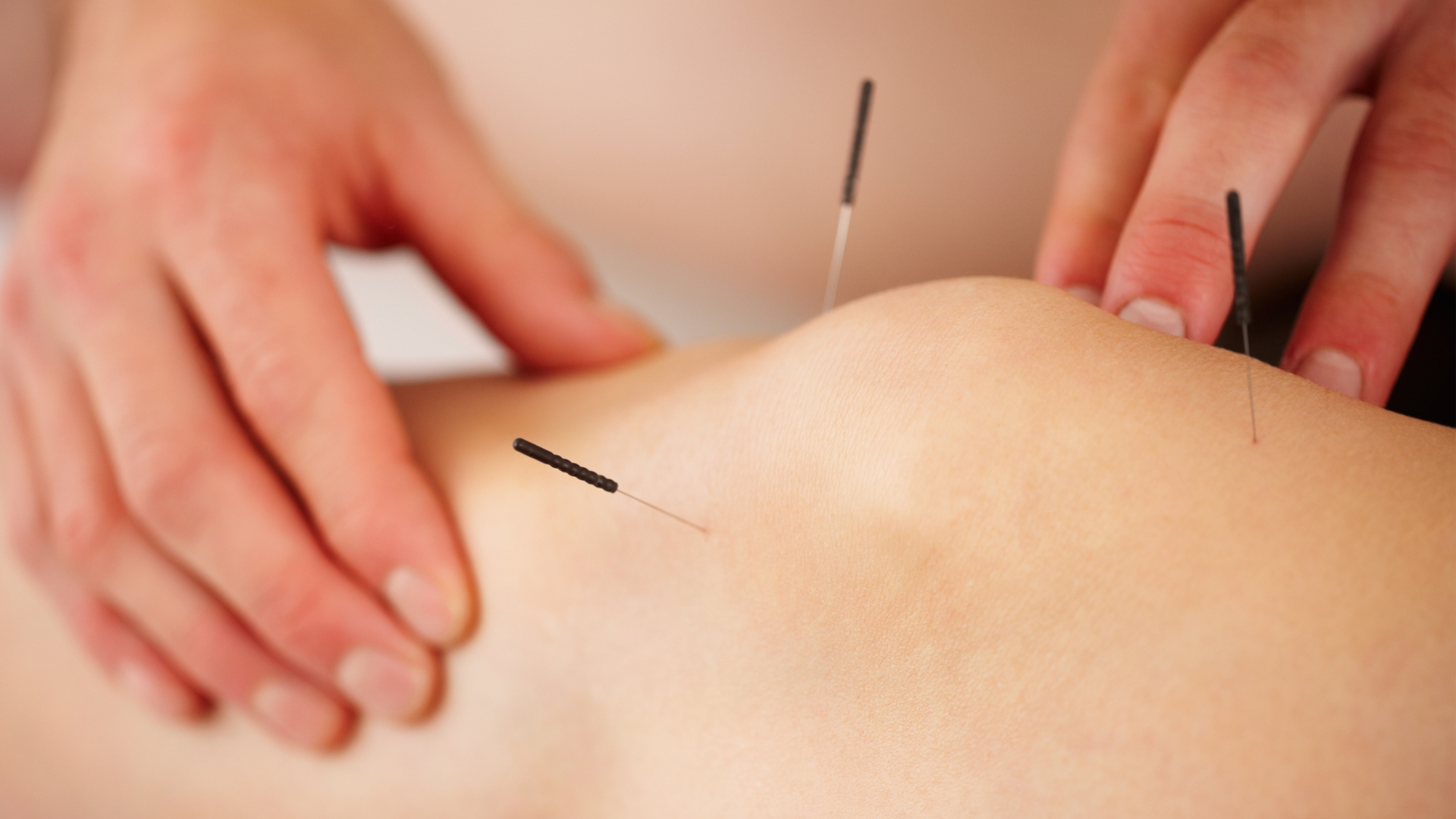
09 May, 2023
Pain is a prevalent issue in modern living, with a significant percentage of the population experiencing some form of pain. According to the National Institute of Health, an estimated 25.3 million American adults suffer from chronic pain. Chronic pain can be debilitating, affecting our physical and mental well-being and hindering us from achieving our goals. Managing Pain with Acupuncture Acupuncture is a natural and traditional Chinese medicine technique that involves the insertion of thin needles into specific points in the body to stimulate the flow of energy or "qi." The stimulation of these points can help reduce pain, inflammation, and enhance overall well-being. Research studies have shown that acupuncture can be an effective method for reducing pain. A study published in the Journal of Pain found that acupuncture can help reduce pain levels in patients with chronic back pain. Another study published in the Journal of Arthritis Research & Therapy showed that acupuncture can help reduce pain levels and improve joint function in patients with knee osteoarthritis. Acupuncture is an ancient Chinese medical practice that involves the insertion of needles into specific points in the body to alleviate various physical and mental conditions. One of the most well-known applications of acupuncture is for pain relief. While the concept of sticking needles into the body might sound intimidating, acupuncture has been found to be an effective alternative treatment for pain management. In this blog, we will explore the link between acupuncture and pain relief and provide evidence from various studies. Acupuncture is believed to work by stimulating the body's natural pain-relieving mechanisms, such as the release of endorphins and serotonin. By targeting specific points on the body, acupuncture can help reduce inflammation and improve blood flow, which can help alleviate pain symptoms. The practice has been used for centuries to treat various types of pain, including chronic pain conditions. Numerous studies have been conducted to explore the efficacy of acupuncture in pain management. In a meta-analysis of 29 randomized controlled trials involving over 17,000 patients, researchers found that acupuncture was effective in treating chronic pain conditions, including back pain, osteoarthritis, and headache. Another study published in the Journal of Pain found that acupuncture was effective in reducing pain intensity and improving physical functioning in patients with chronic pain conditions. Acupuncture has also been found to be effective in treating acute pain conditions, such as postoperative pain. In a study published in the Journal of Clinical Anesthesia, researchers found that acupuncture was effective in reducing postoperative pain and decreasing the use of pain medication in patients undergoing surgery. Another study published in the Journal of Emergency Medicine found that acupuncture was effective in reducing pain intensity and improving function in patients with acute low back pain. Benefits of Acupuncture One of the benefits of acupuncture as a pain management treatment is that it is non-invasive and has minimal side effects. Unlike traditional pain medications, acupuncture does not carry the risk of addiction or dependency. It can also be used in conjunction with other pain management treatments, such as physical therapy or medication, to provide a multi-modal approach to pain management. Other benefits include: Reduced Pain Levels: Acupuncture can help reduce pain levels by promoting the production of endorphins, the body's natural painkillers. Improved Mood: Pain can lead to feelings of depression and anxiety. Acupuncture can help improve mood by reducing stress levels and promoting relaxation. Improved Sleep Quality: Pain can interfere with sleep, leading to fatigue and other health problems. Acupuncture can help improve sleep quality by reducing pain levels and promoting relaxation. Reduced Dependence on Medications: Acupuncture can be used as an alternative or complementary treatment to medications, reducing dependence on drugs with potential side effects. Enhanced Overall Well-Being: Acupuncture can promote overall well-being by reducing pain, improving mood, and promoting relaxation. However, it is important to note that acupuncture is not a one-size-fits-all treatment for pain relief. The effectiveness of acupuncture may vary depending on the individual and the specific pain condition being treated. It is also important to seek treatment from a licensed and experienced acupuncturist to ensure safety and efficacy. Why Choose Blue Q Health and Wellness If you are looking for a reliable and experienced acupuncture practitioner to help manage your pain, look no further. Dr. Dan Fitzsimmons is a licensed acupuncture practitioner with years of experience in providing natural and effective treatments for pain management. At Blue Q Health and Wellness, we offer personalized treatments to meet your specific needs, ensuring that you get the best possible care. Don't let pain control your life. Book an appointment with Dr. Dan Fitzsimmons at Blue Q Health and Wellness today and experience the benefits of acupuncture. Contact us at 727-530-7778 to schedule an appointment. Take control of your life today and achieve a pain-free and fulfilling life. References: Vickers AJ, Cronin AM, Maschino AC, et al. Acupuncture for chronic pain: individual patient data meta-analysis. Arch Intern Med. 2012;172(19):1444-1453. doi:10.1001/archinternmed.2012.3654 Cherkin DC, Sherman KJ, Avins AL, et al. A randomized trial comparing acupuncture, simulated acupuncture, and usual care for chronic low back pain. Arch Intern Med. 2009;169(9):858-866. doi:10.1001/archinternmed.2009.65 Kim TH, Kang JW, Kim KH, et al. Acupuncture for the treatment of chronic low back pain: a multicenter, randomized, blinded, parallel-group trial. Spine. 2013;38(7):549-557. doi:10.1097/BRS.0b013e318275d09c
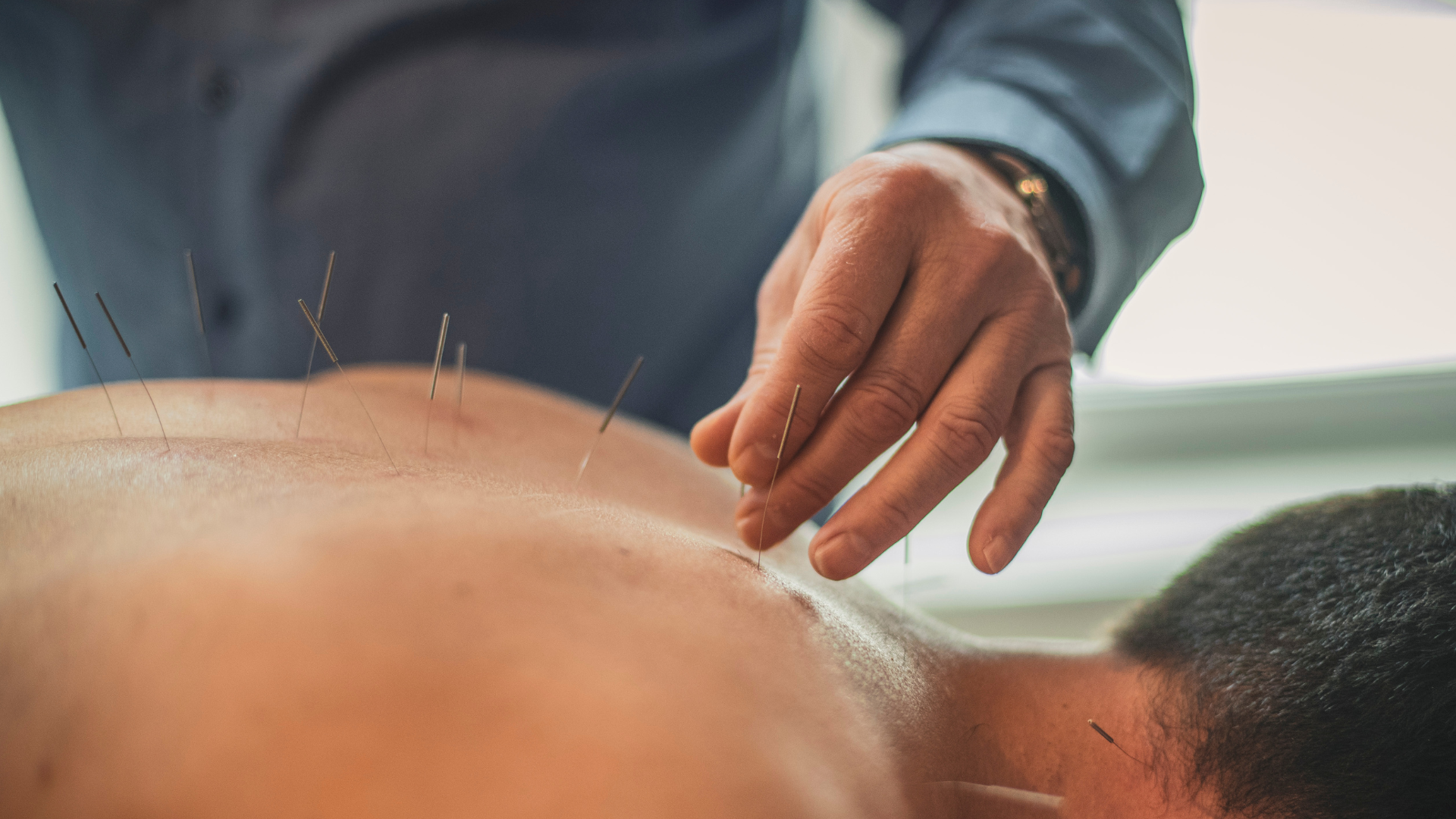
07 May, 2023
Back pain is a common problem that affects millions of people worldwide. Whether it's due to an injury, poor posture, or a sedentary lifestyle, back pain can significantly impact your quality of life. If you're one of the many people who suffer from back pain, acupuncture may be a natural and effective solution for you. In this blog post, we'll explore how acupuncture can reduce back pain, improve your quality of life, and help you continue to succeed in all your activities. Understanding Back Pain and Its Impact on Our Health Before we dive into how acupuncture can help manage back pain, it's essential to understand what back pain is and how it can impact our health. Back pain can range from mild discomfort to severe pain that can affect your ability to perform daily activities. Back pain can lead to other health problems, including anxiety, depression, and reduced mobility. How Acupuncture Works to Reduce Back Pain Acupuncture is an ancient Chinese medicine practice that involves inserting thin needles into specific points on the body. It is based on the theory that the body has energy channels known as meridians, that can become blocked, leading to pain and illness. Acupuncturists use thin needles to stimulate specific points along these meridians, which can help release blocked energy and promote healing. The National Institute of Health has recognized acupuncture as an effective treatment for back pain. Acupuncture is believed to help restore balance and harmony in the body, promoting natural healing and wellness. When it comes to back pain management, acupuncture works by: Reducing Inflammation : Back pain can be caused by inflammation in the affected area. Acupuncture can help reduce inflammation levels, promoting overall health and well-being. Stimulating Nerve Function : Acupuncture can stimulate nerve function, which can help reduce pain signals to the brain and alleviate back pain. Improving Blood Flow : Acupuncture can improve blood flow to the affected area, promoting natural healing and pain relief. Reduced Pain : Acupuncture can help alleviate pain and discomfort, allowing you to perform daily activities without hindrance. Improved Mobility : By reducing back pain, acupuncture can help improve your mobility, allowing you to move freely and engage in physical activities. Better Sleep : Back pain can affect your sleep quality, leading to fatigue and reduced productivity. Acupuncture can promote better sleep, allowing you to wake up feeling refreshed and energized. In addition to treating back pain, acupuncture has also been found to be effective in treating other types of pain, including neck pain, shoulder pain, and knee pain. A systematic review published in the Journal of Pain Research in 2018 analyzed the results of 14 randomized controlled trials that investigated the effectiveness of acupuncture for knee osteoarthritis. The review found that acupuncture was effective in reducing pain intensity and improving functional status compared to standard care. Research and Statistics on Acupuncture for Back Pain Management Numerous studies have shown the effectiveness of acupuncture in reducing back pain and promoting overall health. A study published in the Annals of Internal Medicine in 2014 found that acupuncture was effective in treating chronic back pain. The study involved over 1,000 patients with chronic low back pain, and the results showed that acupuncture was significantly more effective than standard care in reducing pain intensity and improving functional status. Another study published in the Journal of Alternative and Complementary Medicine in 2015 found that acupuncture was effective in treating acute low back pain. The study involved 150 patients with acute low back pain, and the results showed that those who received acupuncture had significantly greater reductions in pain intensity and disability compared to those who received standard care. A meta-analysis published in the Journal of Pain in 2015 analyzed the results of 22 randomized controlled trials that investigated the effectiveness of acupuncture for chronic low back pain. The analysis found that acupuncture was significantly more effective than standard care in reducing pain intensity and improving functional status. The authors concluded that acupuncture should be considered a viable option for the treatment of chronic low back pain. A systematic review published in the Clinical Journal of Pain in 2018 analyzed the results of 30 randomized controlled trials that investigated the effectiveness of acupuncture for chronic low back pain. The review found that acupuncture was effective in reducing pain intensity and improving functional status compared to standard care. The authors concluded that acupuncture was a safe and effective treatment option for chronic low back pain. Call Us If you're suffering from back pain and looking for a natural and effective solution, acupuncture may be the answer for you. Book an appointment today with Dr. Daniel Fitzsimmons at Blue Q Health and Wellness by calling 727-530-7778. Take the first step towards reducing back pain and improving your quality of life today. With acupuncture, you can continue to succeed in all your activities and do all the things you love with all the people you love. References: Cherkin DC, Sherman KJ, Avins AL, et al. A randomized trial comparing acupuncture, simulated acupuncture, and usual care for chronic low back pain. Ann Intern Med. 2004;141(12):901-910. Chou R, Qaseem A, Snow V, et al. Diagnosis and treatment of low back pain: a joint clinical practice guideline from the American College of Physicians and the American Pain Society. Ann Intern Med. 2007;147(7):478-491. MacPherson H, et al. Acupuncture for chronic pain and depression in primary care: a programme of research. Southampton (UK)
Contact
Address:
2480 E Bay Dr STE 13
Largo, FL 33771
Email: blueqhealth@gmail.com
Phone: 727-530-7778
Fax: 727-530-7797
© 2024
All Rights Reserved | BlueQ Health and Wellness
